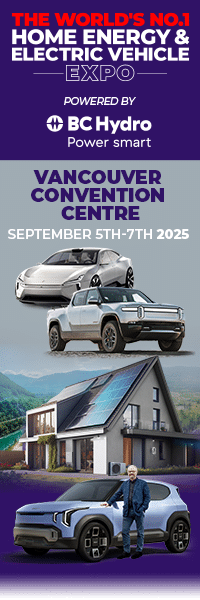
See full review from Green Car Guide
The Volkswagen e-up! shows the progress being made with battery technology: the latest e-up! has an electric driving range of 159 miles compared to 83 miles of the previous model – from a smaller battery.
Model/Engine size
Volkswagen e-up!
Summary
- 159 mile electric driving range
- Fun and agile to drive
- Ideal city car
- One of the more affordable EVs to buy and to run
Background
The Volkswagen e-up! shares the same platform as the Skoda CITIGOe iV and the SEAT Mii Electric. The big news with this latest model is the much-improved 159 mile electric driving range – this may not sound like a lot, but 159 miles is a long way to drive for a car that’s designed to live in a city.
Design & Engineering
The previous-generation Volkswagen e-up! featured an 18.7 kWh battery. The new e-up! has a 32.3 kWh lithium-ion battery. Despite almost doubling the range, thanks to new pouch cells the battery pack is actually 20 litres smaller in volume than before, and it weighs just 15 kg more.
The e-up! has an 82 PS electric motor, a single-speed transmission and front-wheel drive.
There’s more space inside the city car than you might imagine, for the four occupants, and also for luggage in the boot. Volkswagen has even found space at the back of the boot for a compartment for the charging cables, which helps to reduce clutter in the main compartment of the boot. It has five doors, so it’s practical.
Don’t go looking for switches for rear electric windows, because there aren’t any – the windows are hinged at the front and they can be opened at the rear by pushing them outwards.
Volkswagen e-up! Driving Experience
At 1,235kg, the compact Volkswagen e-up! is relatively light for an EV. Combined with its electric powertrain, this results in the e-up! being agile, nippy and fun.
The 248kg battery is located in the floor, so the centre of gravity is low, assisting the handling, and it also has a comfortable ride – although the short wheelbase means that the car can get a bit choppy over undulating road surfaces. The e-up! is front-wheel drive, which is what most people will expect with a city car. The e-up! is also perfectly happy at motorway speeds.
There are three different driving modes: Normal, Eco and Eco+. You can also choose to have more brake regeneration by selecting B rather than D using the gear selector.
If we drill down into some details, then there are some areas that might benefit from a few tweaks…
Firstly, there’s no reach adjustment on the steering wheel. Many people may choose to lower the driver’s seat, and lower the steering wheel (both of which can be done), but doing this means that the top half of the (large) speedo is covered by the top of the steering wheel rim, which isn’t great for checking what speed you’re going. And overall, the driving position isn’t ideal.
The vast majority of electric cars today have a starter button, which is in keeping with the modern character of EVs, but instead the e-up! has an old-fashioned key that you have to put in the ignition and turn.
There are very few differences between the e-up! and the Skoda CITIGOe iV, but one benefit is that when you start the e-up! it displays the electric driving range in the instrument cluster – something that is pretty critical with an EV, yet you have to flick through a number of options to see this on the Skoda.
There’s no touchscreen, but instead there’s a holder for a phone, which can be used for satnav, media etc. However the holder doesn’t seem to accommodate even a modestly-sized iPhone.
One interesting feature is that there’s a very small screen in the stereo unit that displays the image from the reversing camera.
Hot days will also highlight the lack of air vents on the dashboard – there’s just one at either end, plus one on top of the dashboard which sends ventilation upwards to the windscreen.
The lane departure warning system is very intrusive, but thankfully there’s a button to the right of the heating controls to switch this system off.
One other thing that we found is that every day that we came to use the car, it appeared to have changed the heating settings and the radio channel by itself overnight…
Volkswagen e-up! Electric Range and Charging
The Volkswagen e-up! has an official electric driving range (WLTP) of 159 miles. Which is why it’s surprising that during the week we had the car on test the projected average real-life driving range was 179 miles – ie. 20 more than the combined WLTP figure. However most of our driving was city rather than motorway so that probably explains the impressive real-life range. It’s very difficult using up 179 miles of range when driving around the city.
One thing to note is that the range drops by around 10-20 miles if you have the air conditioning on.
With the Combined Charging System (CCS) the e-up! can make use of 40 kW DC charging, this makes it possible to charge an empty battery to 80% in 60 minutes. Using a 7.2 kW AC charger the same charge would take four hours. Using a standard 2.3 kW domestic plug socket, a full charge would take around 16 hours.
Price and Model Range
The Volkswagen e-up! costs £20,555 after the £3,000 UK government plug-in car grant.
Our test car had the option of Pure White paint (£350) taking the price as tested to £20,905.
In comparison, the Skoda CITIGOe iV SE L costs £19,815 after the plug-in car grant (there’s also a cheaper CITIGOe iV SE model but that can’t rapid charge).
EVs have zero benefit in kind company car tax in 2020/21, and zero VED, and electricity should be around just one-fifth of the cost of petrol, so the e-up! should be cheap to run.
Conclusion
As more EVs come to market, there will be a greater choice of cars for different people’s driving patterns. The Volkswagen e-up! is primarily designed as a city car and the 159 mile official electric driving range of this new model – and the 179 mile real-life range that we experienced – has proven to be completely sufficient for a week of city driving. It’s better to drive in a city than a petrol-engined equivalent, both for the driver, and for anyone breathing in emissions of passing cars. Some people may say that there’s an argument that it’s expensive for its relatively short range, but if you take fuel savings into account, and if you pay for the e-up! monthly like most people are doing with EVs, then it’s likely to work out cheaper than a petrol car. The Volkswagen e-up! gains a Green Car Guide rating of 7 out of 10.




